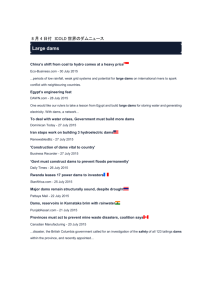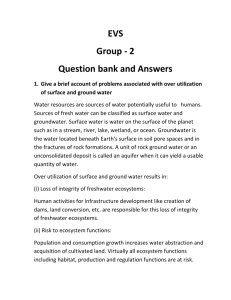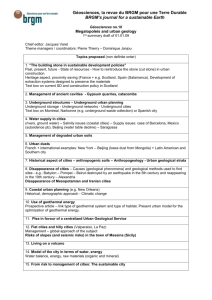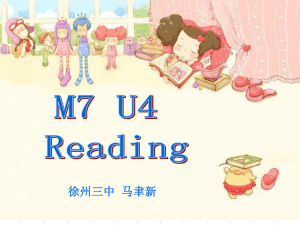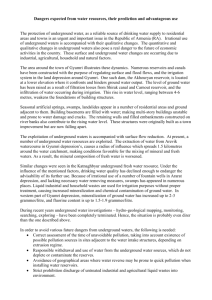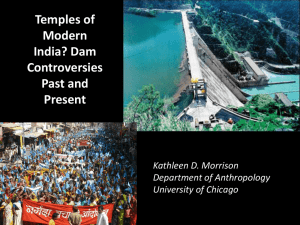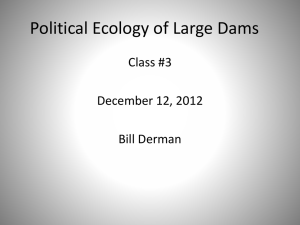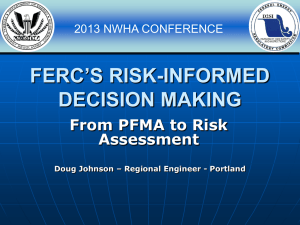Dams and Water Supply
advertisement
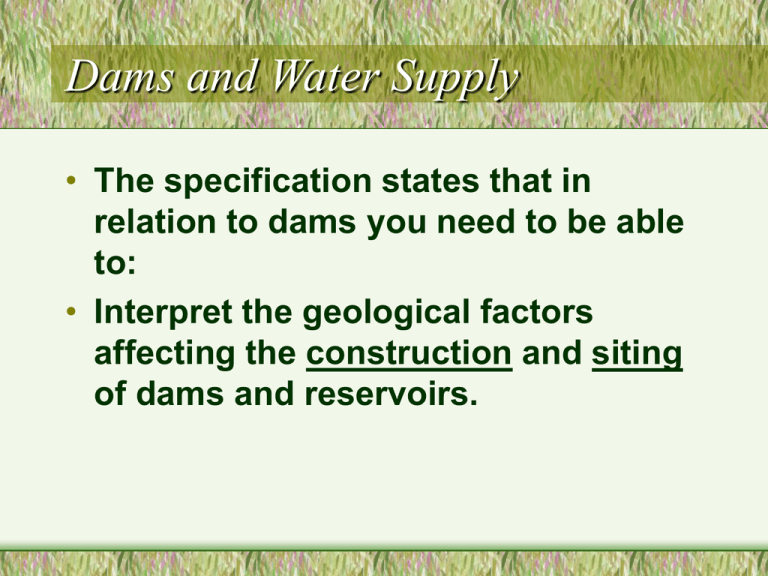
Dams and Water Supply • The specification states that in relation to dams you need to be able to: • Interpret the geological factors affecting the construction and siting of dams and reservoirs. Dams Nature of the underlying rocks. • Depth of weathered rock: – because weathered rock is not as strong as unweathered rock. • Mechanical strength of the rock/load bearing capacity: – To support the massive weight of the dam wall. • Impermeable rocks are important, why? – To stop the water infiltrating away. Dams 2 • Suitable seal between rock and dam. • Seal could be improved by grouting. • Use of a cut off curtain to stop water leakage. • Lack of faults – to stop leaks. • Lack of jointing – to stop leaks. Dams 3 • Strata dip upstream reduces the possibility of instability of the structure. • Lack of folds which could permit leakage due to joints at the hinge. Dams 4 • Lack of seismic activity which could crack the dam or cause landslips. • Lack of landslips. • Lack of volcanic activity. • Absence of underground workings or presence of hidden river channels which could lead to the possibility of collapse. Dams 5 • Suitable building materials such as hard rock/concrete for concrete/masonry dams. • Clay/sediments for earth dam/aggregates. Dams 6 • Other obvious features include: • A steep sided valley to capture the water. • A catchment area that has a reasonable amount of rainfall. • A catchment area with some impermeable rocks to allow runoff to the river. • Lack of sediments in feeder streams which could lead to the silting up of the reservoir. Water Supply • The specification states that you need to be able to: • Describe water supply in relation to river, reservoir and underground sources. • Understand the advantages and disadvantages of surface and underground supply. • Understand that water resources are both renewable and sustainable if carefully developed. Water Supply: Sources • • • • • The 3 main sources are: Rivers Reservoirs Underground or groundwater. We have already discussed different types of groundwater aquifers and reservoirs/dams. • I think you already know about rivers too. • Therefore we will move onto the next section: Surface v Underground Supplies Surface good points: • Easily accessible. • Can be used for recreation or navigation. • Can be of scenic beauty. Surface v Underground Supplies • • • • Surface bad points: May be polluted by effluent or contaminated runoff. During droughts water may be lost. In hot areas evaporation may remove a large proportion of the water. Of no use in arid regions (central Australia). Surface v Underground Supplies • • • • • Underground Good Points. Spring water becomes pure and drinkable by being filtered by passage through sediments. Reliable/constant - non seasonal supply. Accessible even in areas with no rain. Maintained hydrostatic pressure. Lack of surface pollutants Surface v Underground Supplies Underground negative points: • problem of leachate and pollution from waste tips. • problem of recharge and over pumping. • spring water becomes unpalatable if: – leachates contaminate the flow – seawater contaminates the flow Surface v Underground Supplies • too many salts in artesian supply makes water saline. • nitrates/fertiliser contaminate the water. • radioactive water from nuclear waste. • the water table may fall during summer months cutting supply. • the water table may be lowered by over pumping. • recharge may be slow. • hydrostatic pressure falls through time. Sustainable Water Supply • The specification states that you need to: • Understand that water resources are both renewable and sustainable if carefully developed. • Water moves through the water cycle and is just borrowed by humans. • As long as it is put back into the system in a reasonably uncontaminated way then it can be renewable and it’s use sustained. • Overuse for irrigation in hot climates can make the water saline which can be a problem.


